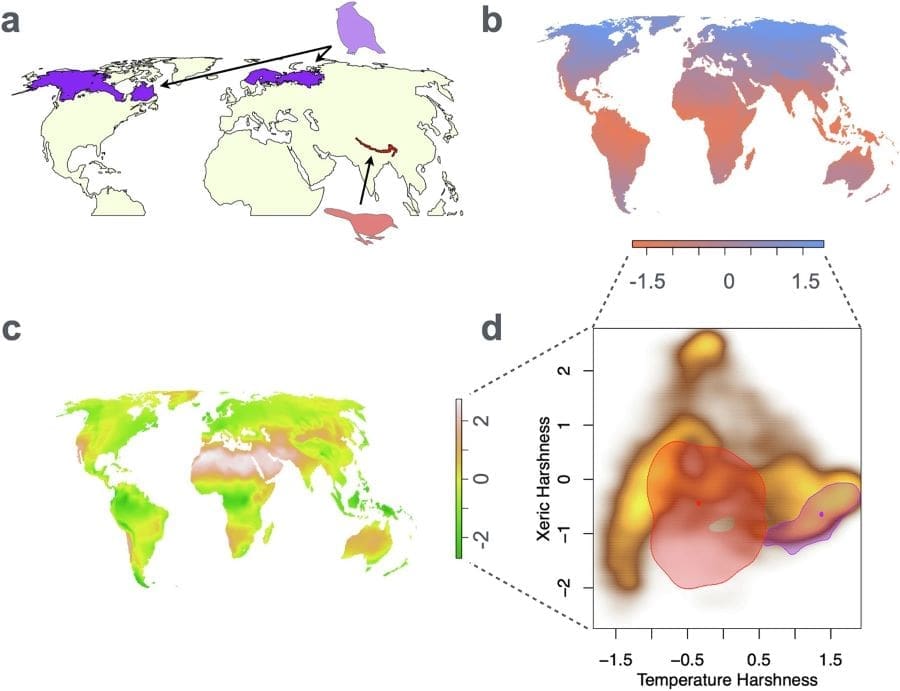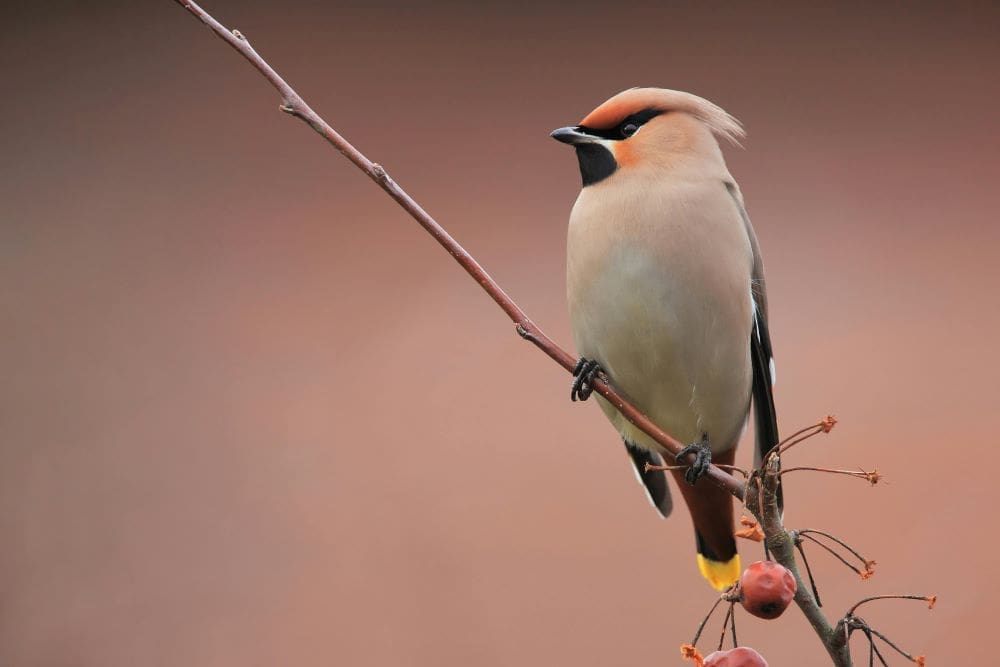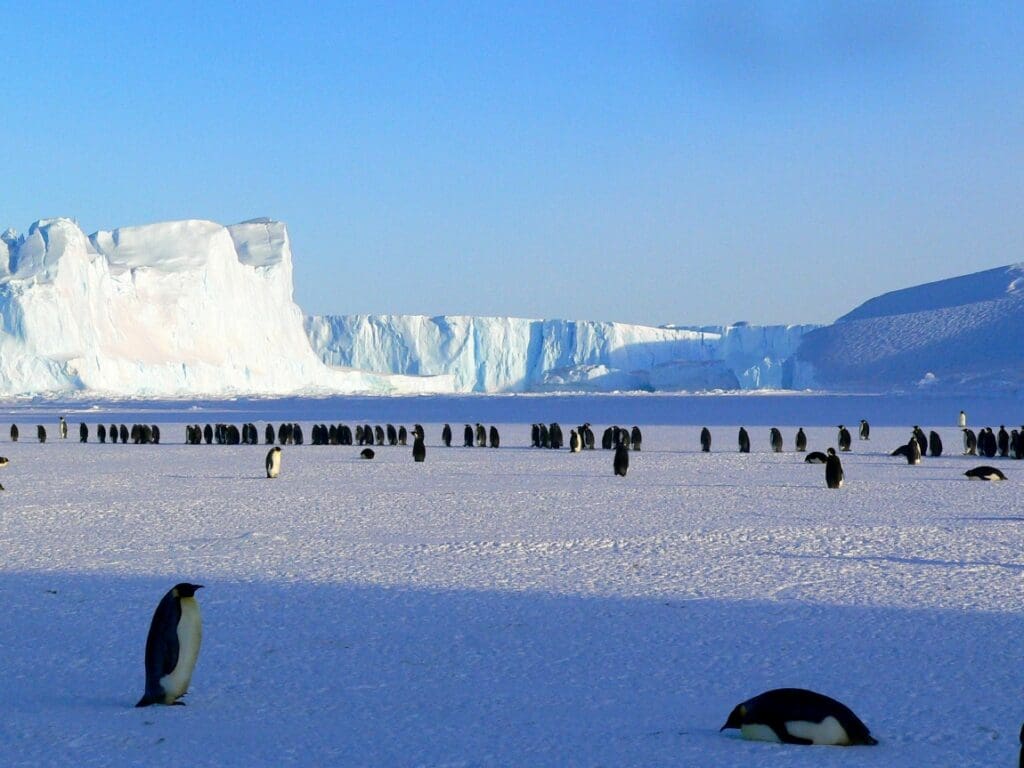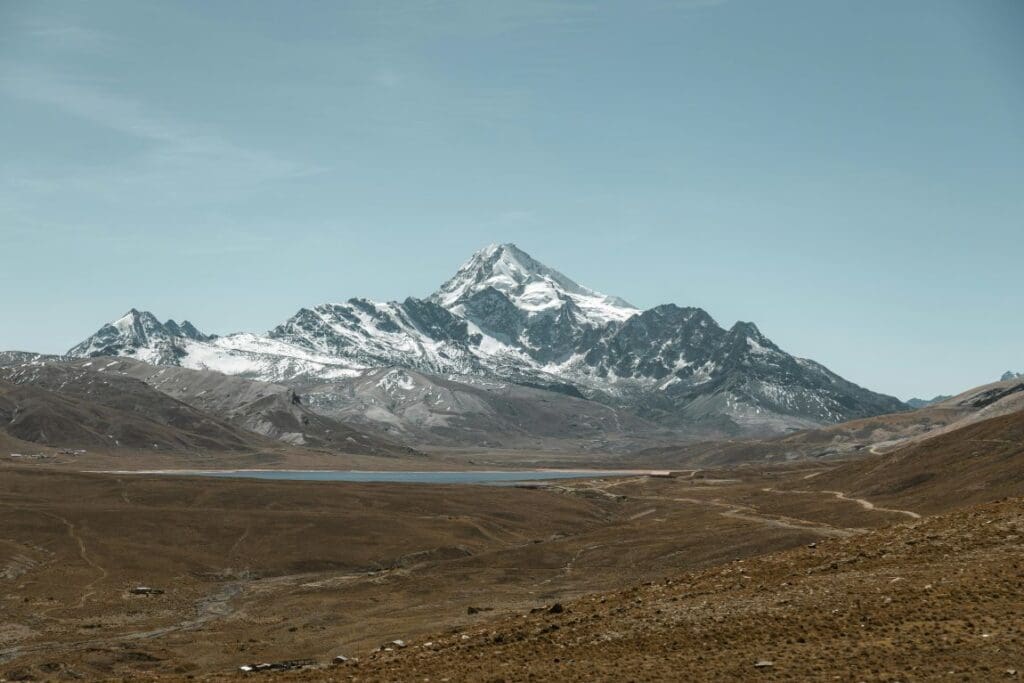Summary:
While it might seem that birds with larger brains and broad geographic ranges are well-equipped to survive climate change, new research reveals that this assumption may be dangerously simplistic. A study published in Nature Communications by researchers at The University of Texas at Austin found that many bird species occupying wide territories are, in fact, specialized to narrow climate niches, making them more vulnerable than previously thought.
By analyzing global distribution data for around 1,500 bird species using millions of citizen science observations, the researchers discovered that migration patterns and central positioning in climate space contribute most to broader climate niches. Surprisingly, traits often associated with adaptability — such as larger brain size, smaller body size, and varied diets — were linked to narrower climate niches instead. Species like the Bohemian waxwing, despite covering large areas of the Arctic, are tightly bound to specific climate conditions and could face heightened extinction risks as temperatures shift.
The study highlights how traditional assessments of species vulnerability often overlook the complex interplay between ecological traits and climate specialization. As climate change accelerates, understanding these hidden vulnerabilities becomes crucial for conservation efforts.

Big brains and big ranges might not save birds from climate change
Biologists have long debated why some plants and animals can adjust to a wide range of climates, while others can’t. Understanding why could help conservation managers and decision makers identify which species are most vulnerable to climate change.
A new study by researchers at The University of Texas at Austin evaluated global distribution maps and other data for about 1500 bird species and found some surprising patterns. For example, the researchers found that some species that breed over large geographic areas can still be adapted to a fairly narrow range of climates, making them more vulnerable to climate change than previously thought. Take for example the Arctic, which occupies a considerable portion of Earth’s landmass but exhibits very similar climate patterns all over.
“Because that region is so big, species that occupy it tend to have large populations and large geographic range sizes — two characteristics that are often associated with lower extinction risks,” said Carlos Botero, an associate professor of integrative biology and senior author of the new study. “The problem here is that because many of those species are adapted to a very narrow range of climates, those seemingly large populations can be quite susceptible to collapse when climate patterns begin to change.”
For example, the breeding range for the Bohemian waxwing, a bird well known to North American and European birders, extends over a large swath of the Arctic, while the chestnut-crowned laughingthrush inhabits a much smaller arc in Asia centered on Nepal and Bhutan. Yet the waxwing inhabits a much smaller and more extreme range of climate conditions than the laughingthrush, suggesting the waxwing may be at greater risk from climate change than previously thought.
The researchers also found that species with larger brains (relative to their body size) tend to be adapted to narrow climate niches, which suggests they could also be more vulnerable to climate change than previously thought. A climate niche is the range of different climate conditions (think temperature, precipitation and how predictably these two vary over time) that a species can thrive in.
“Larger brain sizes correlate with more flexible behavior, so big-brained birds are usually expected to be more adaptable,” Botero said. “However, it turns out that many big-brained birds are climate specialists — meaning that they have evolved to thrive in very particular climate types and may therefore also be more vulnerable to climate change than we expected.”
Botero carried out the study with corresponding author and former UT postdoctoral researcher João Fabrício Mota Rodrigues.
For this study, Rodrigues and Botero used avian range maps estimated from hundreds of thousands of direct observations by citizen scientists reported through eBird. This successful partnership between birdwatchers and scientists is providing highly accurate representations of where different species occur in space and is enabling scientists to answer questions that were simply impossible to address before.
The research team also created a system for describing all the climate types found on Earth in terms of two factors: “temperature harshness,” a value that increases with colder, more variable and less predictable temperatures — and “xeric harshness,” which increases with lower, more variable and less predictable precipitation. Then they created a 2D “climate space” map that shows how much of Earth’s land surface corresponds to each possible combination of these two factors.
Places that are less harsh in temperature and precipitation are near the center, while places that are harsher in one or both factors are farther out.
Finally, for each species, they mapped the range of climates that species tends to occupy onto the climate space map to see where and how large their climate niche is. Birds with a smaller and more extreme climate niche tend to be at higher risk from climate change.
Botero said this study highlights why the usual way of assessing risk for a species, which typically involves a checklist of individual factors, misses the complexity of underlying patterns and contradictions.
“We need to stop looking at individual risk factors in isolation, but evaluate how these complex factors combine,” Botero said. “Sometimes, it is the unexpected interactions that matter most.”
***
This research was made possible by support from the National Science Foundation.
Journal Reference:
Rodrigues, J.F.M., Botero, C.A., ‘The global determinants of climate niche breadth in birds’, Nature Communications 16, 3685 (2025). DOI: 10.1038/s41467-025-58815-1
Article Source:
Press Release/Material by University of Texas at Austin
Featured image credit: Marcel de Bruin | Pexels




